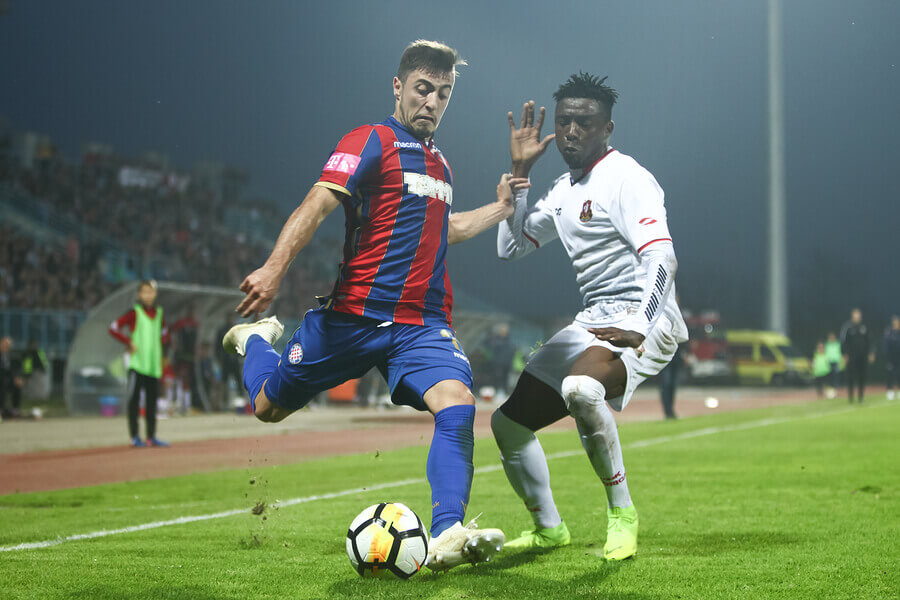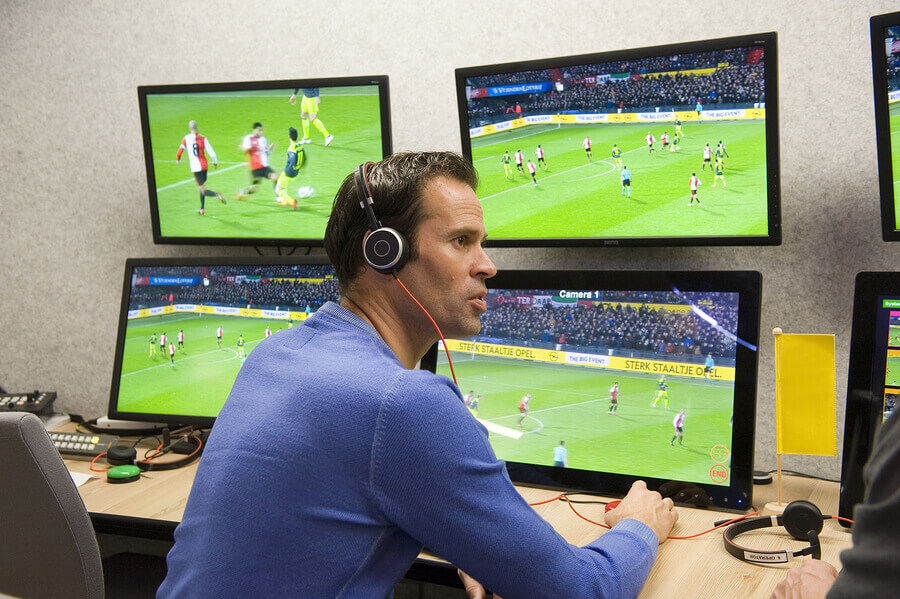Soccer and Technology: Will Sports Justice Win?

After the incorporation of the VAR in the 2018 World Cup in Russia, the complex relationship between soccer and technology has once again generated intense controversies. On the one hand, there are those who argue that technological advances favor sports justice. On the other, there are those who claim that this can affect the true essence of soccer.
First of all, it’s important to note that the relationship between soccer and technology isn’t limited to the video review system – better known as VAR. The structure and dynamics of this and many other sports have benefited from the incorporation of many innovations.
Of course, for the untrained eye, it might be difficult to identify these technological innovations during a game. This is because we usually focus on the action of the players or athletes.
In today’s article, we’ll discuss some technological advances that go almost unnoticed in soccer. And, of course, we won’t ignore the noisy introduction of the VAR in official matches!
Soccer and technology: successful and almost ‘imperceptible’ progress
With so many controversies generated in recent years by the VAR, we frequently forget about the other technologies incorporated into soccer.
A good example of unknown tech is the system known as ‘Hawkeye’, which is used primarily by the referee to confirm goals during matches.
Hawkeye consists of a network of high-resolution cameras strategically located on the playing field to accompany the trajectory of the ball. When the ball completely exceeds the goal line, Hawkeye sends a signal to the referee’s digital clock.
Because of this, this system allows us to automatically and accurately detect the goals. In turn, this minimizes the wrong entries that can favor or harm any of the participating teams.

The technology used to monitor games
There’s also a new and innovative monitoring system for players during the games incorporated in recent years. Theoretically, the monitoring system makes it easy to follow the movements of each player on the field and observe their performance during the match.
In addition, this technology also controls the heart rate and body temperature of each athlete. In this way, it can help in the detection of possible cases of doping or can be an excellent early diagnosis tool for health problems.
Since the beginning of the 21st century, engineers have progressively added game review technology into the sports world. There are many opinions both for and against this situation.
For example, in 2001 rugby became a pioneer sport in the use of cameras to assist arbitration. By strategically positioning them on the field of play, it was possible to significantly minimize errors derived from the natural limitation of the human eye.
Considering the success of its incorporation in official competitions, other sports have also begun to adopt this technology. Tennis, volleyball, and hockey, for example, have quickly added cameras to optimize their arbitration system. Some years later, basketball and baseball also joined this list.
Although they’ve not been exempt from criticism, none of these incorporations has been as controversial as that of the VAR in soccer. But, why is there so much rejection of the combination of soccer and technology? Is it true that the play review system will end up subtracting authority from the referee?
VAR in soccer: exaggerated controversies and inappropriate handling
The VAR consists of the review of “doubtful” plays that are recorded through the network of cameras located on the playing field. The images are transmitted live to a monitoring room, where the video assistants are located.
These assistant judges must review the moves requested by the referee. Then, they’ll inform him about doubtful sets or infractions that go unnoticed by the human eye. This includes the review of goals, free throws or penalties, the “offside” positions, and expulsions. However, the ‘last word’ in arbitration would always be the responsibility of the principal arbitrator.
Because of this, in theory, experts didn’t invent the VAR to replace or subtract authority from the referees. Instead, the VAR should optimize its work and contribute to the effective application of sports justice in soccer.

In practice, inappropriate handling of the VAR really seems to impair the pace of the matches; rather than helping the referees, they end up exposing them to new distrust.
While it’s true that errors in the use of VAR are evident in many cases, all new technology requires time to be used optimally. Logically, it will be the task of FIFA and the soccer federations of each country to promote training for the referees to make the most out of this tool.
Soccer and technology must learn to live together, overcoming mistakes and adding experiences. In short, it’s about following the path to a fairer society, both on and off the field.
After the incorporation of the VAR in the 2018 World Cup in Russia, the complex relationship between soccer and technology has once again generated intense controversies. On the one hand, there are those who argue that technological advances favor sports justice. On the other, there are those who claim that this can affect the true essence of soccer.
First of all, it’s important to note that the relationship between soccer and technology isn’t limited to the video review system – better known as VAR. The structure and dynamics of this and many other sports have benefited from the incorporation of many innovations.
Of course, for the untrained eye, it might be difficult to identify these technological innovations during a game. This is because we usually focus on the action of the players or athletes.
In today’s article, we’ll discuss some technological advances that go almost unnoticed in soccer. And, of course, we won’t ignore the noisy introduction of the VAR in official matches!
Soccer and technology: successful and almost ‘imperceptible’ progress
With so many controversies generated in recent years by the VAR, we frequently forget about the other technologies incorporated into soccer.
A good example of unknown tech is the system known as ‘Hawkeye’, which is used primarily by the referee to confirm goals during matches.
Hawkeye consists of a network of high-resolution cameras strategically located on the playing field to accompany the trajectory of the ball. When the ball completely exceeds the goal line, Hawkeye sends a signal to the referee’s digital clock.
Because of this, this system allows us to automatically and accurately detect the goals. In turn, this minimizes the wrong entries that can favor or harm any of the participating teams.

The technology used to monitor games
There’s also a new and innovative monitoring system for players during the games incorporated in recent years. Theoretically, the monitoring system makes it easy to follow the movements of each player on the field and observe their performance during the match.
In addition, this technology also controls the heart rate and body temperature of each athlete. In this way, it can help in the detection of possible cases of doping or can be an excellent early diagnosis tool for health problems.
Since the beginning of the 21st century, engineers have progressively added game review technology into the sports world. There are many opinions both for and against this situation.
For example, in 2001 rugby became a pioneer sport in the use of cameras to assist arbitration. By strategically positioning them on the field of play, it was possible to significantly minimize errors derived from the natural limitation of the human eye.
Considering the success of its incorporation in official competitions, other sports have also begun to adopt this technology. Tennis, volleyball, and hockey, for example, have quickly added cameras to optimize their arbitration system. Some years later, basketball and baseball also joined this list.
Although they’ve not been exempt from criticism, none of these incorporations has been as controversial as that of the VAR in soccer. But, why is there so much rejection of the combination of soccer and technology? Is it true that the play review system will end up subtracting authority from the referee?
VAR in soccer: exaggerated controversies and inappropriate handling
The VAR consists of the review of “doubtful” plays that are recorded through the network of cameras located on the playing field. The images are transmitted live to a monitoring room, where the video assistants are located.
These assistant judges must review the moves requested by the referee. Then, they’ll inform him about doubtful sets or infractions that go unnoticed by the human eye. This includes the review of goals, free throws or penalties, the “offside” positions, and expulsions. However, the ‘last word’ in arbitration would always be the responsibility of the principal arbitrator.
Because of this, in theory, experts didn’t invent the VAR to replace or subtract authority from the referees. Instead, the VAR should optimize its work and contribute to the effective application of sports justice in soccer.

In practice, inappropriate handling of the VAR really seems to impair the pace of the matches; rather than helping the referees, they end up exposing them to new distrust.
While it’s true that errors in the use of VAR are evident in many cases, all new technology requires time to be used optimally. Logically, it will be the task of FIFA and the soccer federations of each country to promote training for the referees to make the most out of this tool.
Soccer and technology must learn to live together, overcoming mistakes and adding experiences. In short, it’s about following the path to a fairer society, both on and off the field.
All cited sources were thoroughly reviewed by our team to ensure their quality, reliability, currency, and validity. The bibliography of this article was considered reliable and of academic or scientific accuracy.
- Tecnología en el fútbol, videoarbitraje VAR. Football-Technology. FIFA. Extraído de: https://football-technology.fifa.com/es/media-tiles/video-assistant-referee-var/
- Fifa.com. Reglas del juego 2018, 2019. Extraído de: https://img.fifa.com/image/upload/qafar0qbviwls7vqabkl.pdf
This text is provided for informational purposes only and does not replace consultation with a professional. If in doubt, consult your specialist.








